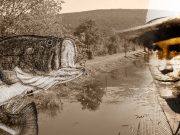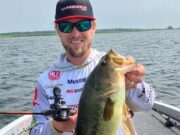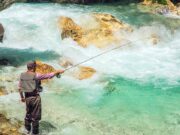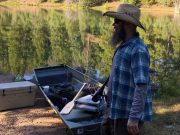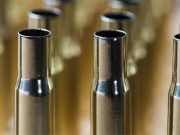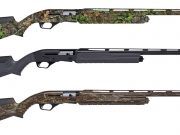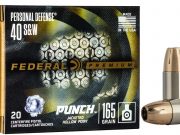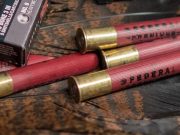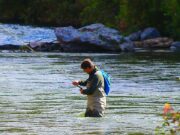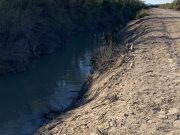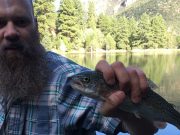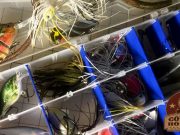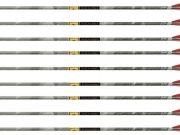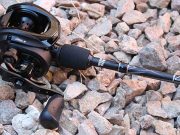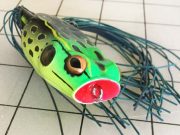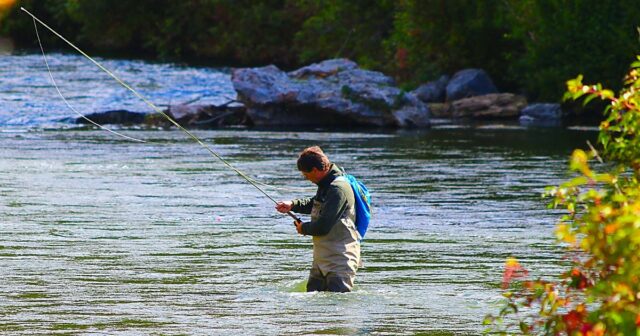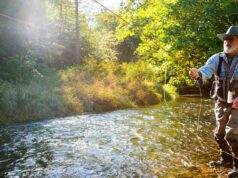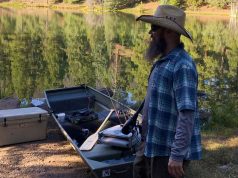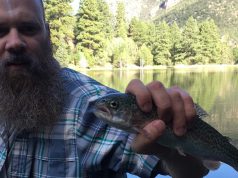Ah, the Provo River in the Wasatch Mountains of Utah, a fly fisherman’s dream. Every bend and curve of the river offers a new challenge and an opportunity to connect with nature in a way that few places can offer.
For beginners, the Provo River is a playground that will ignite your passion for fly fishing. With its easy-to-access sections, you can cast your line into the water and feel the thrill of catching your very first fish. And for the more experienced anglers who crave a true adventure, the Provo River offers some of the most remote and backcountry spots that will take you on a journey that you won’t soon forget.
The Provo River truly has something for everyone, whether you want to spend a lazy afternoon casting your line into tranquil waters or trekking through rugged wilderness in pursuit of the ultimate catch. So if you’re looking for a fishing destination that will ignite your passion and give you an experience that you’ll never forget, look no further than the Provo River. It’s a place where the beauty of nature and the thrill of the catch come together in perfect harmony.
Where to fish on the Provo River
The Provo River is divided into three unique sections: the Upper Provo, Middle Provo, and Lower Provo.
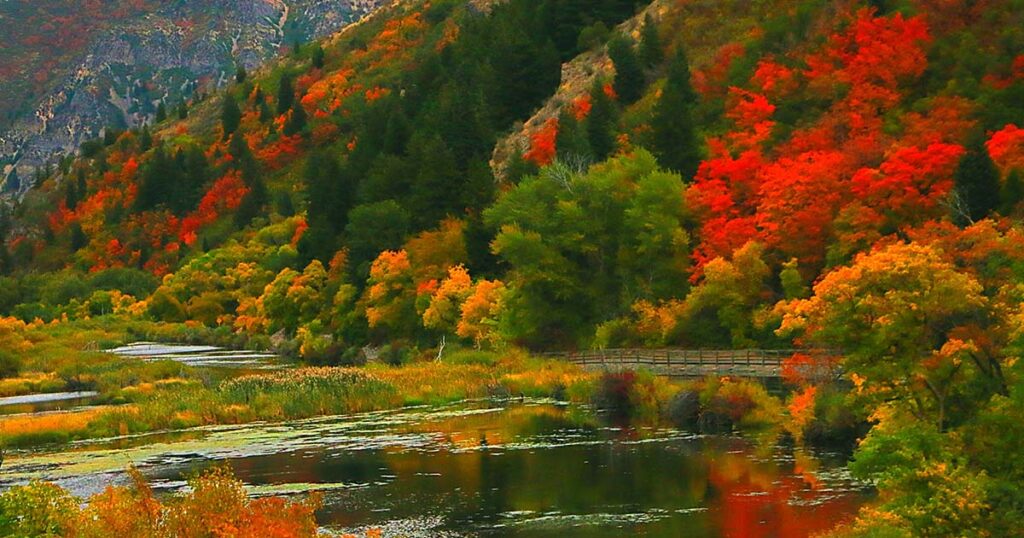
The Upper Provo is a freestone river that runs wild with snowmelt and runoff from the rugged western Uintas Mountains. This section will take you deep into the heart of the mountains. Here, you’ll find remote fishing spots that are teeming with trout and surrounded by pristine wilderness. This is a place where you can disconnect from the hustle and bustle of modern life and connect with the raw power of nature.
The Upper Provo is located above Jordanelle Reservoir and is known for its remote, rugged beauty. This section is perfect for fishermen who are looking for a backcountry fishing experience. The Upper Provo is home to native cutthroat trout, best fished from mid-June to early October. Access to the Upper Provo is limited, and anglers should be prepared for a challenging hike to reach some of the better fishing spots, and keep in mind that this section has more private sections than other parts of the river.
If you’re looking for the best chance at brown trout , the middle and lower sections of both the Provo and Weber Rivers are the places to be.
The Middle Provo is a more accessible section of the river that still offers plenty of opportunities for adventure. Here, you’ll find miles of river that are perfect for fly fishing, as well as some of the most scenic views in the region. Whether you’re a beginner or an experienced angler, the Middle Provo is a place where you can test your skills and experience the thrill of the catch.
The Middle Provo is the most popular section of the river and runs from Jordanelle Reservoir to Deer Creek Reservoir. This section of the river is home to a good population of brown and rainbow trout, and it’s best fished from late March to mid-November. The Middle Provo is easily accessible, and plenty of public access points are along the river. The section from the Jordanelle Dam to Charleston is incredibly productive.
And finally, the Lower Provo is a section of the river that is loved by anglers and non-anglers alike. Here, you’ll find a more urban environment, with parks, trails, and plenty of opportunities for recreation. But don’t let that fool you – the Lower Provo still offers some of the best fishing in the region, with plenty of trout waiting to be caught.
The Lower Provo runs from Deer Creek Reservoir to Utah Lake and is known for its impressive fish population. This section of the river is home to brown and rainbow trout and mountain whitefish. The Lower Provo is best fished from late March to mid-November, and plenty of public access points are along the river. The section below the Deer Creek Dam is also a productive place to fish. This lower Provo has blue winged olive, mayfly, and dun hatches that can lead to some awesome dry fly fishing. The lower Provo River has a 60/40 ratio of browns to rainbows.
What Fish can be caught on the Provo River?
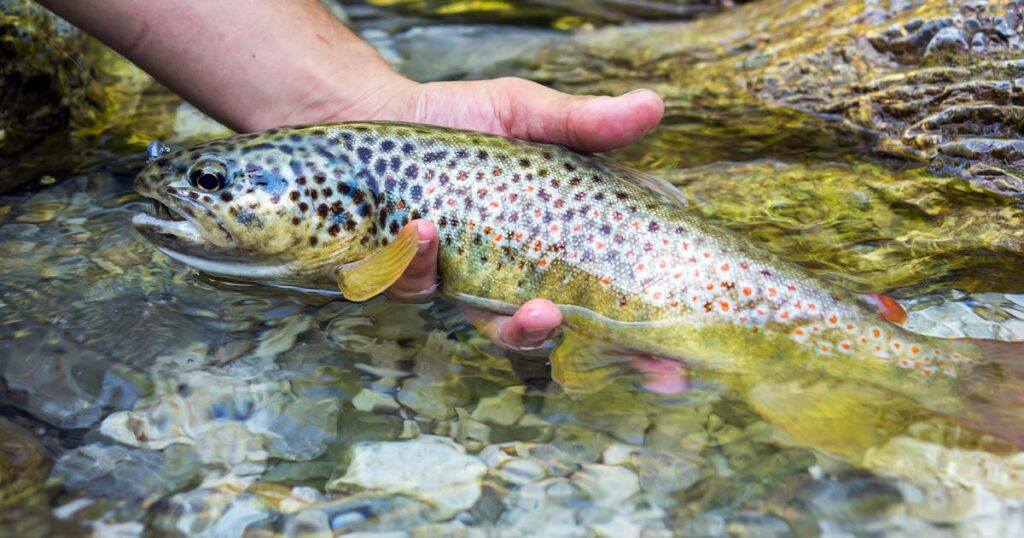
- Brown Trout
- Rainbow Trout
- Cutthroat Trout
- Brook Trout
- Mountain Whitefish
- Smallmouth Bass
- Channel Catfish.
Gear and Tackle for fishing the Provo River
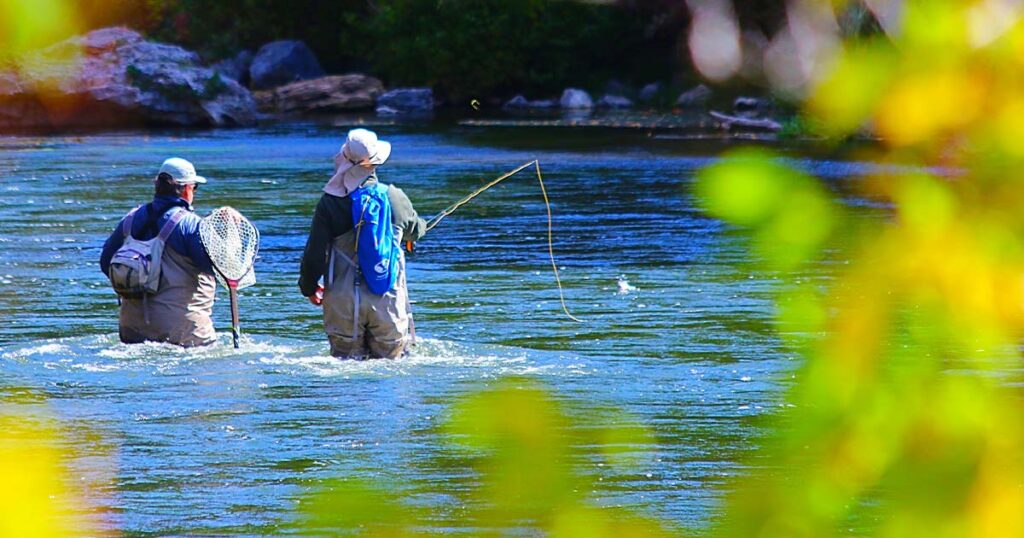
When fishing the Provo River, having the right equipment can make or break your adventure. From rods and reels to lines and flies, you want to make sure you hit the river with gear that will give you the best chance at catching the big ones. Here’s a breakdown of the essential equipment needed for a successful day on the Provo River.
Rods
In general, A 9-foot, 5-weight rod will be the best all-around setup for most of the fish found in the Provo River. That being said, the Provo River offers a variety of fishing conditions, so it’s important to have a rod that can handle different types of water and fish. A 3-5 weight rod for the Upper Provo section is ideal for the smaller cutthroat trout in this remote backcountry. In the Middle and Lower Provo sections, a 4-6 weight rod is a good choice for the larger brown and rainbow trout.
Lines
The Provo River offers a mix of fast and slow-moving water, so it’s important to have a line that can handle different speeds and depths. A weight-forward floating line with a tapered leader is a good all-around option for the Provo River, as it can be used for dry and wet fly fishing. The leader should be between 9 and 12 feet long and tapered down to 4x or 5x. For those wanting to fish deeper pools, a sinking tip line can help get the fly down to the desired depth.
Flies
Dry flies are particularly effective on the Provo River, and anglers should have a variety of patterns in their fly box. Some tried and true patterns include the Hare’s Ear, Pheasant Tail, Scud, Zebra/Tiger Midge, Parachute Adams, Blue Wing Olive, Elk Hair Caddis and San Juan Worm. And don’t forget about the trusty Small Stonefly Nymph . These patterns have stood the test of time and continue to produce results on the Provo.
Nymphing is also a productive technique on the Provo River, so make sure you bring a variety of nymph patterns in your fly box, such as the Pheasant Tail, Hare’s Ear, and Zebra Midge.
When Streamer fishing the Provo, popular streamer patterns include the Woolly Bugger, Sculpzilla, and Clouser Minnows.
It’s important to match the hatch, so keep an eye on what insects and aquatic life are the most active.
Other Gear
A few other items can make a day on the Provo River more enjoyable. A good pair of waders and wading boots can make navigating the river a heck of a lot easier. A good landing net can also be helpful in safely landing and releasing fish. And don’t forget to bring some sunscreen, polarized sunglasses, and a hat to protect yourself when you’re out on the water.
Fishing Techniques on the Provo River
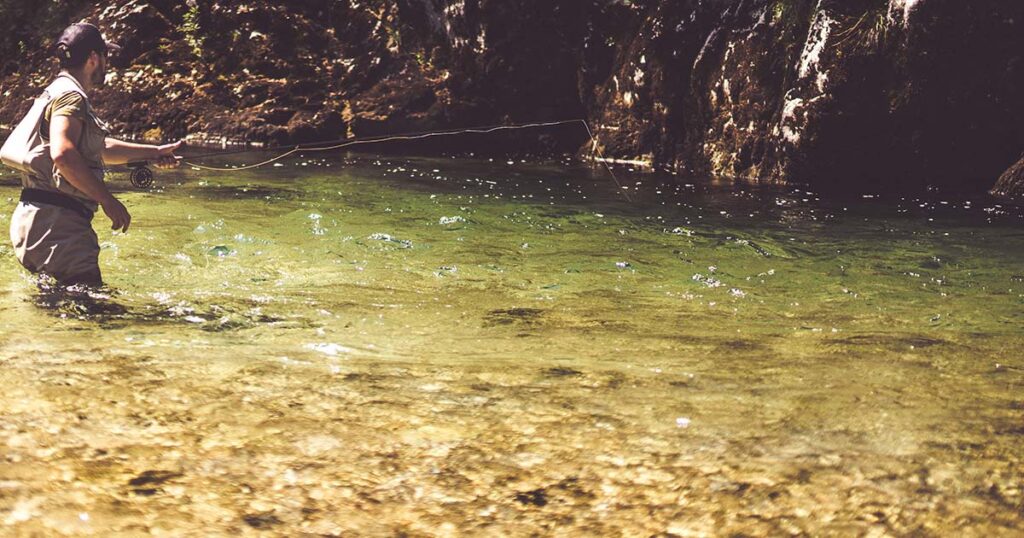
The Provo River is a popular destination for fly fishing, but it can be challenging for beginners. Here are some tips for reading the water and locating fish on the Provo River.
Look for riffles and runs. Riffles and runs are areas of the river where the water moves quickly over shallow rocks or gravel. These areas are perfect for finding trout, as they provide oxygen-rich water and food sources. Look for fish feeding in the foam lines or along the seams of slower-moving water.
Check out deep pools. Deep pools are another productive area for fishing on the Provo River. These areas often hold larger fish, particularly during the warmer months when the water temperature increases. Fish these areas with a sinking line or nymph rig, using patterns that imitate what is most active in the area you are fishing.
Look for structure. Fish like to hang out near structure in the river, such as rocks, logs, and undercut banks. These areas provide cover and protection from predators and places to ambush prey. Fish the edges of these structures with a dry fly or streamer pattern, working the fly along the edges where fish are likely lurking.
Pay attention to the weather and time of day. Weather patterns and the time of day can impact fishing on the Provo River. Overcast days are often more productive for fishing than sunny days, as the fish are more likely to feed on the surface. Early morning and late evening are also good times to fish, as fish tend to be more active.
Rules and regulations for fishing the Provo River.
Fishing License: To fish on the Provo River, you must have a valid Utah fishing license. Licenses can be purchased online or at a local sporting goods store.
Catch and Release: The Provo River is primarily a catch-and-release river.
Fishing Season: Fishing on the Provo River is open year-round, but the type of fish that can be caught and the fishing methods allowed vary depending on the season. Check the Utah Division of Wildlife Resources website for specific dates and regulations.
Fishing Methods: Only artificial flies and lures may be used on the Provo River. Bait fishing and the use of scented lures are prohibited.
River Access: Please respect private property boundaries and only access the river from designated access points. Trespassing on private property is prohibited and can result in fines or legal action.
Restrictions: The use of lead sinkers and lead jigs are prohibited on the Provo River, as they can harm fish and other aquatic life.

 <
<
